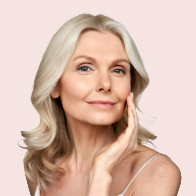Wrinkle relaxers, including Botox® and Dysport®, are non-surgical treatments designed to reduce the appearance of dynamic wrinkles by temporarily relaxing the underlying muscles. These injectables are made from botulinum toxin, a neurotoxic protein that, when administered in small doses, blocks nerve signals to specific facial muscles, reducing their movement. Over time, repetitive muscle movements lead to fine lines and wrinkles, especially around the eyes (crow’s feet), forehead, and between the eyebrows. By halting these movements, wrinkle relaxers help smooth the skin, leading to a more youthful appearance.
Both Botox® and Dysport® are FDA-approved and among the most widely used non-invasive cosmetic treatments globally. While both brands serve similar purposes, subtle differences in their formulation allow for slight variations in spread and onset of action. This makes them adaptable to a range of aesthetic needs, making it crucial to consult a qualified provider to determine which one is right for you.
Why Choose Wrinkle relaxers?
Aging is inevitable, but wrinkle relaxers can delay visible signs of aging without the need for surgery. The treatments are fast, effective, and come with minimal downtime, allowing patients to maintain a youthful and vibrant appearance with ease. The non-permanent nature of Botox® and Dysport® is also attractive, as results last for a few months, giving you the flexibility to adapt your aesthetic goals over time.
In addition to their aesthetic benefits, wrinkle relaxers are also used to treat a range of medical conditions. For instance, Botox® has been approved to alleviate chronic migraines, hyperhidrosis (excessive sweating), and certain muscle spasms. These dual uses make wrinkle relaxers versatile treatments beyond just cosmetic applications.
Comprehensive Overview of Wrinkle relaxers
Botox® and Dysport® belong to a family of neurotoxins known as botulinum toxin Type A. When injected into muscles responsible for creating expressions, the toxin prevents the release of acetylcholine, a neurotransmitter that facilitates muscle contraction. This blockage results in the temporary paralysis or relaxation of the muscle, which smooths the skin above it.
The treatment is quick and relatively painless. The procedure typically takes around 10 to 30 minutes depending on the number of areas being treated, and no anesthesia is required. Because the procedure is minimally invasive, there’s little to no recovery time, making it a popular choice for those with busy lifestyles.
Key Benefits of Wrinkle relaxers
-
Fast Treatment: Most sessions are completed within 30 minutes.
-
Minimal Discomfort: The injections feel like tiny pinches and don’t usually require numbing.
-
Customizable: Treatments are tailored to the individual, targeting areas of concern.
Are You a Candidate for Wrinkle relaxers?
Wrinkle relaxers are suitable for a broad range of individuals, but the ideal candidate is someone experiencing early signs of dynamic wrinkles, typically from repetitive facial expressions. Patients between the ages of 25 and 65 are the most common recipients of Botox® or Dysport®.
It is also essential that you are in good health and free from certain neuromuscular disorders like ALS or myasthenia gravis, as these conditions can be exacerbated by botulinum toxin. Pregnant or breastfeeding women should avoid these treatments as well. A thorough consultation with a licensed practitioner will help determine if wrinkle relaxers are safe and effective for your needs.
Conditions That May Disqualify You
-
Allergies to any ingredients in Botox® or Dysport®.
-
History of allergic reactions to botulinum toxin treatments.
-
Active infections at the treatment site.
-
Neuromuscular disorders.
What Issues Can Wrinkle relaxers Address?
Wrinkle relaxers are primarily used to treat dynamic wrinkles—those caused by muscle movements such as smiling, frowning, or squinting. Common areas of treatment include:
-
Forehead lines: Horizontal lines that form from raising your eyebrows.
-
Glabellar lines (frown lines or "11s"): Vertical lines between your eyebrows caused by frowning or concentrating.
-
Crow’s feet: Fine lines around the outer corners of the eyes from smiling or squinting.
-
Bunny lines: Wrinkles that appear along the sides of the nose when smiling.
-
Lip lines: Vertical lines around the mouth from puckering.
Botox® and Dysport® are also used to address non-aesthetic concerns like:
-
Hyperhidrosis: Reducing excessive sweating, particularly in the underarms, palms, and feet.
-
Bruxism and Jaw Slimming: Reducing teeth grinding and creating a slimmer jawline by relaxing the masseter muscle.
What to Expect During a Wrinkle Reducer Treatment
Your treatment will begin with a consultation where your practitioner will assess your facial anatomy, the areas of concern, and your overall aesthetic goals. Based on this assessment, they will determine the appropriate injection sites and the amount of product needed.
The actual injections are brief, with each site receiving a small dose of Botox® or Dysport®. Most patients describe the sensation as a minor pinch or sting. The procedure is quick, typically lasting between 15-30 minutes depending on the treatment area.
Immediate Aftercare:
-
Avoid rubbing or massaging the treated area for at least 24 hours.
-
Refrain from strenuous exercise, lying down, or consuming alcohol for 24 hours.
Results and How Long They Last:
You will begin to notice results within 3-5 days, with the full effect visible within 1-2 weeks. Results typically last between 3 to 6 months, after which you can return for maintenance treatments.
Recovery and Downtime
One of the major benefits of wrinkle relaxers is that there is little to no recovery time. After your appointment, you can go about your day as usual, though avoiding intense physical activity for at least 24 hours is advisable. Mild side effects like redness, swelling, or bruising at the injection site may occur but are generally short-lived.
Alternatives to Wrinkle relaxers
-
Dermal Fillers: Such as hyaluronic acid fillers (e.g., Juvederm, Restylane).
-
Chemical Peels: Remove the outer layer of skin to reduce wrinkles.
-
Microneedling: Stimulates collagen production to firm the skin.


